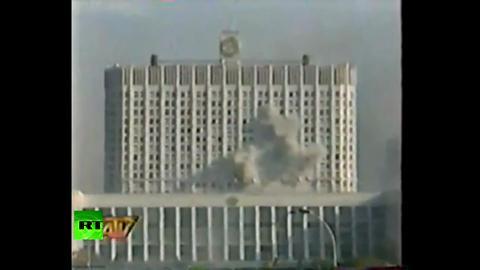Litwin
Diamond Member
bad , bad news for Pugane´s gas - station , when we see the new 1991?
" OPEC’s oil production in June came in at the lowest level since May 1991 during the Gulf War, and collectively meeting its promised cut. "

 oilprice.com
oilprice.com

related:
Ronald Reagan and the Defeat of the Soviet Empire - jstor
www.jstor.org › stable
Putin's Russia is a declining state, camouflaged in external aggression ... who are increasingly challenging Putin's authoritarian and colonial rule. ... Karelia, Tuva, Sakha, Magadan and other parts of Siberia and the Far East.
"Russia’s economy has been stagnating for several years, living standards continue to decline and poverty is increasing. Demographic statistics reveal a shrinking population with high mortality, low fertility and rising emigration. Russia’s population has dipped from 148 million after the breakup of the Soviet Union in the early 1990s to about 142 million today. This total will fall to around 128 million by 2050 and an increasing percentage will be neither ethnic Russian nor Orthodox Christian. Although Russia defines itself as a federation, in reality it is a centralized neo-imperial construct that, unlike Britain or France, has failed to dismantle its empire and develop a modern civic state.
dumping Moscow’s trash in the northern Arkhangelsk and Komi regions, economic exploitation and curtailment of the national language in Tatarstan and other republics, the building of Orthodox cathedrals in Siberia’s Krasnoyarsk region, the falsification of elections in Buryatia, the appointment of outsiders as governors in Kalmykia and other republics, the arbitrary changes of borders between Chechnya and Ingushetia or growing ethnic tensions in Dagestan fueled by unpopular government decisions. Almost any issue can trigger demonstrations against Moscow’s rule and accelerate demands for autonomy and even separation.

A process of awakening is evident in Siberia, the Urals, the Far East and the Far North, where there are growing distinctions with Muscovites even among people viewed as Russians but who settled generations ago and developed distinct local identities. Several of Russia’s federal units possess the natural resources and favorable location to become independent economically once they terminate their exploitation by Moscow. Trade and investment from neighboring European and Asian countries can significantly develop regions such as Kaliningrad, Karelia, Tuva, Sakha, Magadan and other parts of Siberia and the Far East."
Russia's regions are in revolt
" OPEC’s oil production in June came in at the lowest level since May 1991 during the Gulf War, and collectively meeting its promised cut. "

OPEC Production Falls To Three Decade LowOPEC Production Falls To Three Decade Low | OilPrice.com
OPEC’s oil production in June came in at the lowest level since May 1991 during the Gulf War, and collectively meeting its promised cut
related:
Ronald Reagan and the Defeat of the Soviet Empire - jstor
www.jstor.org › stable
Putin's Russia is a declining state, camouflaged in external aggression ... who are increasingly challenging Putin's authoritarian and colonial rule. ... Karelia, Tuva, Sakha, Magadan and other parts of Siberia and the Far East.
"Russia’s economy has been stagnating for several years, living standards continue to decline and poverty is increasing. Demographic statistics reveal a shrinking population with high mortality, low fertility and rising emigration. Russia’s population has dipped from 148 million after the breakup of the Soviet Union in the early 1990s to about 142 million today. This total will fall to around 128 million by 2050 and an increasing percentage will be neither ethnic Russian nor Orthodox Christian. Although Russia defines itself as a federation, in reality it is a centralized neo-imperial construct that, unlike Britain or France, has failed to dismantle its empire and develop a modern civic state.
dumping Moscow’s trash in the northern Arkhangelsk and Komi regions, economic exploitation and curtailment of the national language in Tatarstan and other republics, the building of Orthodox cathedrals in Siberia’s Krasnoyarsk region, the falsification of elections in Buryatia, the appointment of outsiders as governors in Kalmykia and other republics, the arbitrary changes of borders between Chechnya and Ingushetia or growing ethnic tensions in Dagestan fueled by unpopular government decisions. Almost any issue can trigger demonstrations against Moscow’s rule and accelerate demands for autonomy and even separation.

A process of awakening is evident in Siberia, the Urals, the Far East and the Far North, where there are growing distinctions with Muscovites even among people viewed as Russians but who settled generations ago and developed distinct local identities. Several of Russia’s federal units possess the natural resources and favorable location to become independent economically once they terminate their exploitation by Moscow. Trade and investment from neighboring European and Asian countries can significantly develop regions such as Kaliningrad, Karelia, Tuva, Sakha, Magadan and other parts of Siberia and the Far East."
Russia's regions are in revolt


 ▶ 2:16
▶ 2:16